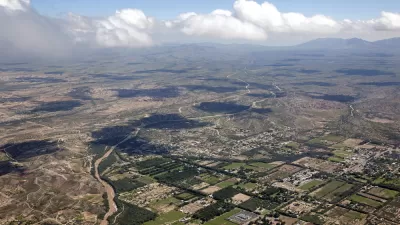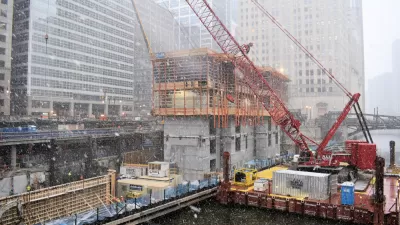A bill to forcibly disband the tiny city of Vernon, California and incorporate it into Los Angeles County failed to pass earlier this week on concerns that it would economically weaken the county.
If you're just catching up on the Vernon story, the city has been the center of much controversy and suspicion over the government's almost autocratic control over its citizens. With only 112 residents, the city actually owns much of the city's housing stock and even manages it. Similar to the Bell scandal, Vernon city officials have made exorbitant salaries that they awarded themselves.
Assembly Speaker John Pérez had proposed the bill to disincorporate the city as a way to "permanently root out corruption there." The bill failed to pass on a 13-17 vote.
The L.A. Times quoted a statement by Speaker Pérez:
""Today's action by the Senate is a deep disappointment to the men and women of the Southeast Communities. I introduced AB 46 to finally end the toxic corruption that has poisoned the Southeast Communities by disincorporating Vernon."
"The fact is clear: Senators Calderon and De León, along with their colleagues, have given Vernon a free pass to continue doing business as usual, and those senators will own the responsibility for any misdeeds that may occur in the future."
FULL STORY: State Senate rejects controversial plan to disband city of Vernon [Updated]

Trump Administration Could Effectively End Housing Voucher Program
Federal officials are eyeing major cuts to the Section 8 program that helps millions of low-income households pay rent.

Planetizen Federal Action Tracker
A weekly monitor of how Trump’s orders and actions are impacting planners and planning in America.

Ken Jennings Launches Transit Web Series
The Jeopardy champ wants you to ride public transit.

Rebuilding Smarter: How LA County Is Guiding Fire-Ravaged Communities Toward Resilience
Los Angeles County is leading a coordinated effort to help fire-impacted communities rebuild with resilience by providing recovery resources, promoting fire-wise design, and aligning reconstruction with broader sustainability and climate goals.

When Borders Blur: Regional Collaboration in Action
As regional challenges outgrow city boundaries, “When Borders Blur” explores how cross-jurisdictional collaboration can drive smarter, more resilient urban planning, sharing real-world lessons from thriving partnerships across North America.

Philadelphia Is Expanding its Network of Roundabouts
Roundabouts are widely shown to decrease traffic speed, reduce congestion, and improve efficiency.
Urban Design for Planners 1: Software Tools
This six-course series explores essential urban design concepts using open source software and equips planners with the tools they need to participate fully in the urban design process.
Planning for Universal Design
Learn the tools for implementing Universal Design in planning regulations.
Ada County Highway District
Clanton & Associates, Inc.
Jessamine County Fiscal Court
Institute for Housing and Urban Development Studies (IHS)
City of Grandview
Harvard GSD Executive Education
Toledo-Lucas County Plan Commissions
Salt Lake City
NYU Wagner Graduate School of Public Service




























